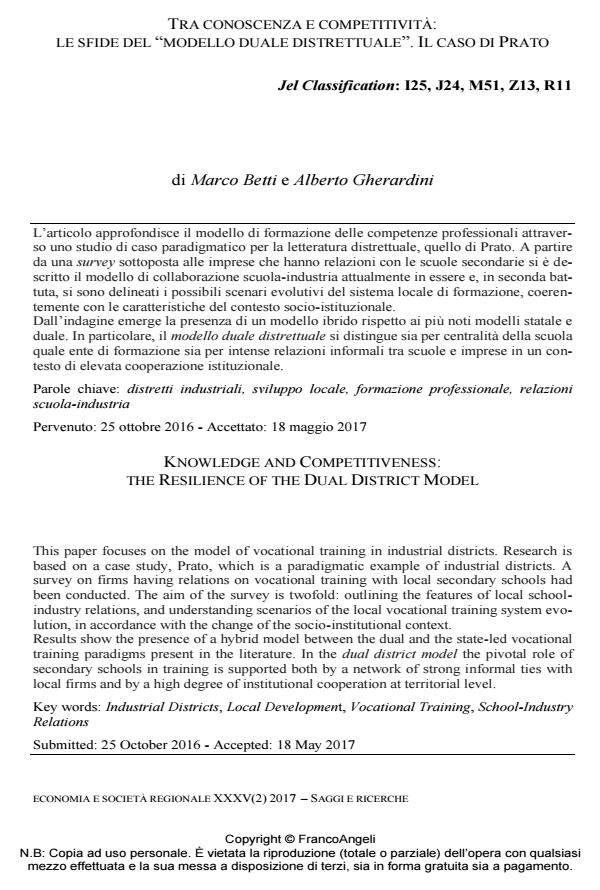Knowledge and competitiveness: the resilience of the dual district model
Journal title ECONOMIA E SOCIETÀ REGIONALE
Author/s Marco Betti, Alberto Gherardini
Publishing Year 2017 Issue 2017/2
Language Italian Pages 17 P. 104-120 File size 410 KB
DOI 10.3280/ES2017-002010
DOI is like a bar code for intellectual property: to have more infomation
click here
Below, you can see the article first page
If you want to buy this article in PDF format, you can do it, following the instructions to buy download credits

FrancoAngeli is member of Publishers International Linking Association, Inc (PILA), a not-for-profit association which run the CrossRef service enabling links to and from online scholarly content.
This paper focuses on the model of vocational training in industrial districts. Research is based on a case study, Prato, which is a paradigmatic example of industrial districts. A survey on firms having relations on vocational training with local secondary schools had been conducted. The aim of the survey is twofold: outlining the features of local schoolindustry relations, and understanding scenarios of the local vocational training system evolution, in accordance with the change of the socio-institutional context. Results show the presence of a hybrid model between the dual and the state-led vocational training paradigms present in the literature. In the dual district model the pivotal role of secondary schools in training is supported both by a network of strong informal ties with local firms and by a high degree of institutional cooperation at territorial level.
Keywords: Industrial Districts, Local Development, Vocational Training, School-Industry Relations
Jel codes: I25, J24, M51, Z13, R11
Marco Betti, Alberto Gherardini, Tra conoscenza e competitività: le sfide del "modello duale distrettuale". il caso di Prato in "ECONOMIA E SOCIETÀ REGIONALE " 2/2017, pp 104-120, DOI: 10.3280/ES2017-002010